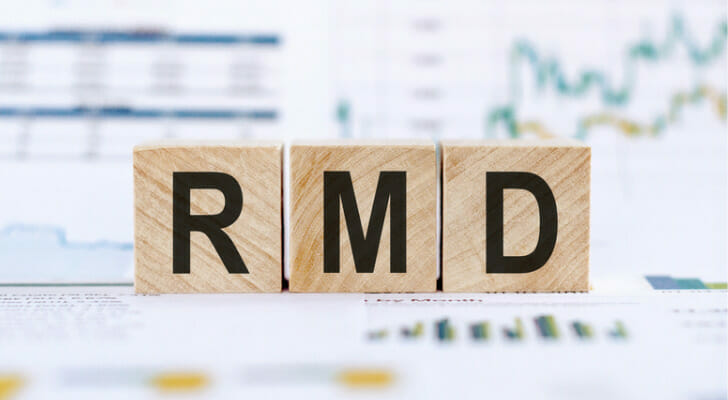4 Strategies to Limit RMDs
Saving for retirement is hard. You have to put aside money consistently, make smart investment choices and hope that none of them go sideways. What might be even tougher than saving for retirement, though, is making the right moves in retirement to make that money last. It doesn’t help that the government throws a wrench into this problem in the form of required minimum distributions (RMDs), requiring you to draw down your account whether or not you actually need the funds. With some planning and know-how though, there are ways you can lessen the impacts of RMDs, helping the money you worked hard to save for your retirement last that much longer.
For more help managing the distribution phase of your retirement savings, consider working with a financial advisor.
What to Know About RMDs
Required minimum distributions are exactly what they sound like: a minimum percentage of your tax-deferred retirement savings that you have to take out each year. The government requires these distributions to ensure it gets the tax money that has been deferred all these years. RMDs apply to most tax-advantaged retirement accounts, like 401(k) plans and traditional individual retirement accounts (IRA). They do not apply to Roth retirement accounts, which are funded with after-tax money.
Use our RMD Calculator to see how your balance and age affect your annual distribution.
Required Minimum Distribution (RMD) Calculator
Estimate your next RMD using your age, balance and expected returns.
RMD Amount for IRA(s)
RMD Amount for 401(k) #1
RMD Amount for 401(k) #2
About This Calculator
This calculator estimates RMDs by dividing the user's prior year's Dec. 31 account balance by the IRS Distribution Period based on their age. Users can enter their birth year, prior-year balances and an expected annual return to estimate the timing and amount of future RMDs.
For IRAs (excluding Roth IRAs), users may combine balances and take the total RMD from one or more accounts. For 401(k)s and similar workplace plans*, RMDs must be calculated and taken separately from each account, so balances should be entered individually.
*The IRS allows those with multiple 403(b) accounts to aggregate their balances and split their RMDs across these accounts.
Assumptions
This calculator assumes users have an RMD age of either 73 or 75. Users born between 1951 and 1959 are required to take their first RMD by April 1 of the year following their 73rd birthday. Users born in 1960 and later must take their first RMD by April 1 of the year following their 75th birthday.
This calculator uses the IRS Uniform Lifetime Table to estimate RMDs. This table generally applies to account owners age 73 or older whose spouse is either less than 10 years younger or not their sole primary beneficiary.
However, if a user's spouse is more than 10 years younger and is their sole primary beneficiary, the IRS Joint and Last Survivor Expectancy Table must be used instead. Likewise, if the user is the beneficiary of an inherited IRA or retirement account, RMDs must be calculated using the IRS Single Life Expectancy Table. In these cases, users will need to calculate their RMD manually or consult a finance professional.
For users already required to take an RMD for the current year, the calculator uses their account balance as of December 31 of the previous year to compute the RMD. For users who haven't yet reached RMD age, the calculator applies their expected annual rate of return to that same prior-year-end balance to project future balances, which are then used to estimate RMDs.
This RMD calculator uses the IRS Uniform Lifetime Table, but certain users may need to use a different IRS table depending on their beneficiary designation or marital status. It's the user's responsibility to confirm which table applies to their situation, and tables may be subject to change.
Actual results may vary based on individual circumstances, future account performance and changes in tax laws or IRS regulations. Estimates provided by this calculator do not guarantee future distribution amounts or account balances. Past performance is not indicative of future results.
SmartAsset.com does not provide legal, tax, accounting or financial advice (except for referring users to third-party advisers registered or chartered as fiduciaries ("Adviser(s)") with a regulatory body in the United States). Articles, opinions and tools are for general informational purposes only and are not intended to provide specific advice or recommendations for any individual. Users should consult their accountant, tax advisor or legal professional to address their particular situation.
RMDs currently kick in at age 73 (75 for those born in 1960 or later). To calculate your RMD, you’ll need your account balance as of December 31 of the previous year. You then divide that amount by an IRS divisor that corresponds with your age (you can find this number on the IRS Uniform Lifetime Table).
For example, if you turn 73 in 2026, you will divide your account balance on Dec. 31, 2025, by 26.5 (the IRS divisor for age 73). If your account balance is $100,000, your RMD would be about $3,774.
1. Continue Working a Little Longer
It’s understandable to want to retire as soon as possible. But, if you’re able to do it, staying in your job just a bit longer could mean some serious savings when it comes to RMDs. This will make life easier when you finally retire.
If you participate in a 401(k) plan at work and keep working past age 73, you can delay RMDs for that company’s plan until you retire, so long as you don’t own more than 5% of the company you work for.
Keep in mind that if you have money in a 401(k) from a previous employer or in an IRA, you’ll have to follow all RMD rules on that money. Still, delaying taking out even some of your money allows it to grow longer, giving you more in your account.
2. Take Your First RMD Immediately
Due to the structure of RMD payment deadlines, some people end up having to take two mandatory withdrawals in their first year.
Here’s the deal: Whenever you turn 73, you have until April 1 of the following year to take out your first RMD. After that, you have to take your yearly RMD by December 31 of each year.
Let’s say you turn 73 in August and decide you’ll wait until the following year to take your first RMD, figuring you’re retiring at year’s end and your tax bracket could go down. This, however, leads to you having to take two RMDs in one year. Instead, you’re better off taking the first RMD as soon as you turn 73, which spreads out the withdrawals.
3. Consider a Roth Conversion
As mentioned above, Roth IRA owners don’t have to take out RMDs. This is because Roth IRA contributions have already been taxed, so the government isn’t concerned with getting its share. While you can’t go back in time and change your savings strategy to include a Roth IRA, you can act now to roll over some of your savings into a Roth IRA.
Once you roll a portion of your money from your 401(k) into a Roth IRA, you won’t have to take any out until you want to and it can keep growing tax-free indefinitely. Keep in mind, though, that you will have to pay taxes on all of the money at once when you perform the Roth IRA rollover. This comes with some sticker shock, but it is still worth considering if you can get past the initial cost.
4. Donate to a Qualified Charity
Retirees who are at least 70 ½ can satisfy part or all of their required minimum distribution by donating directly to a qualified charity from their IRA. In 2025, you may transfer up to $108,000 as a qualified charitable distribution (QCD). The amount given is excluded from your taxable income, effectively reducing your overall tax exposure while supporting charitable organizations. Keep in mind that this option applies only to IRAs; funds from 401(k) plans aren’t eligible for QCDs.
Bottom Line
RMDs start at either age 73 or 75, depending on when you were born. An RMD is a minimum withdrawal you must take each year from your tax-deferred retirement accounts. There are ways to reduce their impact, including timing withdrawals strategically, rolling your money over to a Roth IRA, continuing to work and giving to charity.


Retirement Planning Tips
- A financial advisor can help you navigate the dispersal of your retirement savings. Finding a qualified financial advisor doesn’t have to be hard. SmartAsset’s free tool matches you with up to three financial advisors who serve your area, and you can interview your advisor matches at no cost to decide which one is right for you. If you’re ready to find an advisor who can help you achieve your financial goals, get started now.
- Want to see how much you’ll need in retirement? Use SmartAsset’s retirement calculator to get a sense.
Photo credit: ©iStock.com/Nastassia Samal, ©iStock.com/Andrii Zastrozhnov, ©iStock.com/tdub303
